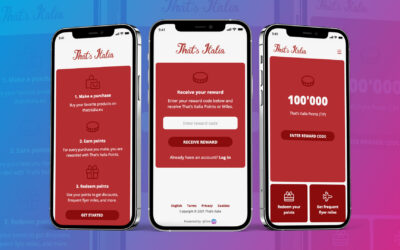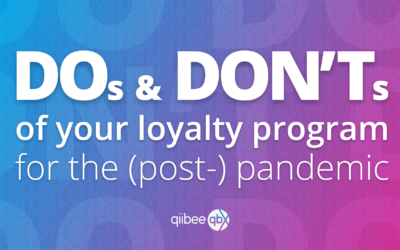Top Challenges in Loyalty
In last week’s post, we looked at how some luxury brands, such as Luisa Via Roma were able to successfully implement forms of loyalty that were both engaging and managed to overcome some of the main challenges faced in the loyalty landscape.
It is vital to first clarify the main three categories of challenges in the loyalty landscape, before diving into the specific challenges. These primary concerns are integration, complexity, and measurability. The vast majority of challenges that arise when tackling loyalty stem from these main issues.
What Can We Learn From the Success
The luxury industry has experienced great success with the implementation of more technologically advanced loyalty programs that are centered around perk and tier systems. As we saw last week, some brands like Hugo Boss implemented loyalty systems that were positively received by the fans but also retained a great level of simplicity.
In fact, the previous success stories emphasize the importance of simplicity but also the one-on-one communication that is necessary to build and maintain such a successful program. This communication expands past just the internal cross-department communication into communication with fans. Below you will find the top 5 challenges in loyalty that arise for luxury brands as well as other brands in the loyalty landscape.
So What Are The Top 5 Challenges in Loyalty for Luxury Brands?
Managing data
Often times it is difficult and it can even get expensive for a luxury brand to capture a full picture of their consumer profile as well as their loyalty incentives, especially with the shift onto a more digital luxury experience, it is vital that data collected from all channels, digital and physical, is correctly stored, categorized, and utilized to improve various aspects of the implemented loyalty programs. Additionally, some brands may find it difficult or time-consuming to fully analyze the data collected, making it essentially ineffective to use as a tool for improving loyalty.
Tracking and gaining loyalty insights can be crucial in determining which channels are worth using to promote the loyalty program and which need tweaking in order to reach maximum efficiency. Therefore it is essential that brands, especially luxury brands that are now adjusting a more digital business strategy, are able to keep the data stored in an organized manner to facilitate any management and implementation of data points
Communication of loyalty benefits
This is where communication especially one-on-one communication about loyalty features is key, this means that not only do all departments have to be on the same page regarding all the details of the loyalty program and the specific intricacies but the communication of all these details should be simple enough for a consumer to understand the specific loyalty aspects.
Any questions, such as: “What happens if the points aren’t used? How many points can be awarded per purchase? will undoubtedly come into question at some point. Therefore it is vital that the communication process is correctly executed, also on an external level. This is another challenge that can be a make or break situation for the program because, without proper rules and conditions, it makes the process chaotic and unusable.
Consistency across departments
As was previously mentioned the communication of all loyalty details is essential, with that being said the communication of these details to ensure that all departments are on the same page, is just as important. This goes back to the idea of one-on-one communication but specifically on a department level.
An example issue would be that the front-end of the luxury brand gives out discount codes for a campaign but on the back-end, the IT department has not activated these codes yet. As you can see this would cause a commotion and users would be very unhappy, which would to lead diminishing the image of the brand as well as degrading its luxury status. Creating lackluster resutls simply because department level communication or consistency wasn’t achieved effectively.
Omnichannel loyalty integration
A lot of brands today that have developed loyalty programs or a form of loyalty, seem to struggle when it comes to fully maximizing their potential user engagement, this is due to the fact that fans might not even be aware of the loyalty program/benefits. As we observed in last week’s example, Hugo Boss, was able to utilize different touchpoints such as their website, store, and mobile-app to incentivize users to join their loyalty program.
Remember you can have the best loyalty program in the world but it doesn’t help if your fans don’t even know about it.
So make sure to utilize all the channels possible to create the greatest awareness for your loyalty program. Some luxury brands do this well because they are able to more efficiently promote the programs on their socials.
Understanding loyalty and measuring its impact
In order to develop and implement a loyalty program, certain considerations have to be taken into account regarding the way that the program functions and its impact from both the brand- and consumer-side.
For example, it is vital that a luxury brand defines what cost the points have to the company and what the worth is to the consumer. Other important questions such as how to leverage loyalty data to created targeted luxury promotions, are also just as important to consider.
The fact of the matter is that if a brand doesn’t fully understand the worth and the impact of their loyalty program, it could lead to financial losses simply because the buy-in of loyalty points to be handed out in the program may be higher than the actual value pulled from the loyalty program.
First, consider what data can be leveraged for targeted promotions in loyalty and next find out how to strategically map-out the loyalty details (point cost, reward cost, etc.). Otherwise, a potentially risky situation may arise where points are wasted and brands will end up losing money from the loyalty implementation.
Key Takeaways (TL:DR)
-
Manage data better, by categorizing and sorting it, implement these data insights for visible results.
-
Communicate everything! Make sure all aspects of the loyalty program are clear to the user and they know how to maximize their loyalty options.
-
Consistency across departments, make sure all departments are on the same page and the front-end is synchronized with the back-end.
-
Omnichannel loyalty integration, give users the freedom to access and use your loyalty program on any of your channels as well as increasing brand awareness.
-
Understand and define the metrics that measure the success and impact of your loyalty program.
Without the challenges faced, the solutions we are developing would never be as innovative and effective as they are shaping out to be. Therefore, it is vital to understand and reflect on the above-mentioned challenges. All brands may face these challenges, but some of the luxury brands previously discussed give us an idea of how these challenges can be overcome. Gaining a better understanding of the general challenges faced in loyalty and more specifically in luxury, is pivotal in developing a strategy that allows brands to fully capitalize on the loyalty landscape.
qiibee: Access world-class brands your customers love.
Most Recent Posts
qiibee x That’s Italia – New Brand Roll-Out
We are proud to announce the next brand joining our ecosystem «That’s Italia». Led by Forme srl,...
The Uprise of NFTs: The Digital Collection Paradise
NFTs have taken the world by storm, with a lot of the success observed lying in the endless...
Shaping Your Program for the (Post-) Pandemic – The Do’s and Don’ts of Loyalty
The previous year saw a massive change in the way the world functioned, new compliances were...



